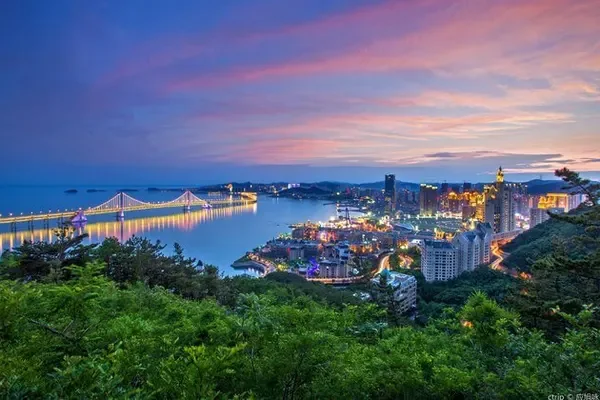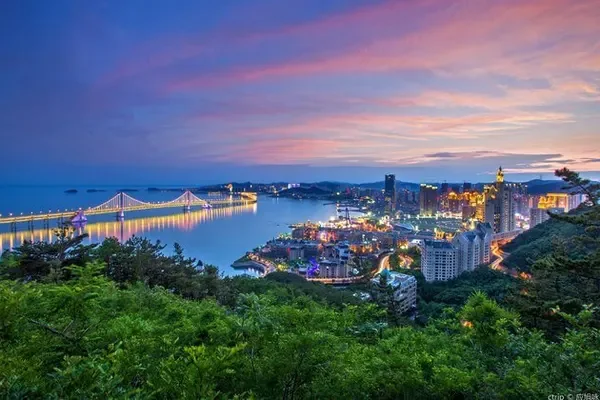
Tibetan culture is an important part of the diversity of the Chinese nation and a treasure of world culture. Dege is the birthplace of Kham Tibetan culture, where the ancient and splendid Tibetan culture flourished, and the national hero King Gesar left an immortal legend here.
It doesn't matter whether Dege is an encyclopedia of Tibetan culture or a treasure house of beliefs under the snow-capped mountains. In the hearts of Tibetans, Dege is the hometown of civilization they are proud of. Let the smell of mulberry smoke fill the blood, let the butter lamps illuminate the heart lake, and let the Bodhi root become the destination of the soul.
Follow the footsteps of the Sichuan-Tibet Raiders, to find the origin of Kangba Tibetan culture, to feel the piety in the crimson red.
01
【Line Arrangement】

02
Highlights of the itinerary
Red Buddha Capital - Seda

Seda's religious culture is extensive and profound. In addition, it is one of the birthplaces of "The Biography of King Gesar". The national folk culture represented by Gesar culture and temple religious culture occupies an extremely important position.

In the world's largest Larung Wuming Buddhist Academy, watch the wonders of tens of thousands of monks' houses densely covering the hillside. On the hillside full of prayer flags in the southwest of the prayer tower, you can overlook the entire Buddhist academy. With the scripture hall in the center as the boundary, the lama's territory is on the slope, and Juemu lives on the bottom slope. There are some restaurants and restaurants next to the main hall. shop. The crimson red Tibetan-style bungalows stretch for several kilometers, and thousands of lamas and Juem live there, which is very spectacular.
The Daughter Kingdom of Tibet——Yaqing Temple

Yaqing Monastery was first built in 1985 and was abboted by Lama Aqiu Rinpoche, a Dzogchen achiever. Built on the grassland wetland surrounded by mountains, there are thousands of small wooden houses where believers live, and the criss-crossing rivers surround the entire temple complex.

The best place to appreciate and take pictures of Yaqing Temple is on Xiuxiu Mountain, from here you can see the whole picture of Yaqing Temple. Every morning or dusk, the island is filled with smoke, the river is shining with golden light, and the sound of chanting scriptures is heard from far away with the wind, which is like the sound of nature and moves people's hearts.
Encyclopedia of Tibetan Culture - Dege Sutra Printing House

In Dege, in the northwest of Sichuan Province, there is a temple of the Sakya sect of Buddhism, Gengqing Temple. There is a Sutra Printing House in Gengqing Monastery, named Dege Sutra Printing House. Its full name is "Tibetan Cultural Treasure Dege Tashi Guomang Dafa Treasure House Sutra Printing House", also known as "Dege Auspicious Juhui Sutra Printing House".

Dege Sutra Printing House is known as "Encyclopedia of Tibetan Culture", "Brilliant Cultural Pearl in Tibetan Areas", and "Treasure House under Snow Mountain". It was built in 1729 and has a history of more than 260 years. The Sutra Printing House has a unique structure, towering red walls, whirling green trees, quiet and spectacular. The side next to the gate is the first floor and the ground floor, and the main building is the second and third floors, which are unevenly arranged and belong to the typical Tibetan architectural style.
This is a journey of pure belief. Everything you meet will touch your soul, pursue Tibetan Buddhist beliefs and Tibetan cultural heritage, and pursue your own heart.
03
【Itinerary】
Day1: Chengdu - Dujiangyan - Wenchuan - Maerkang - Guanyin Bridge
Highlights of the itinerary: 5.12 Earthquake Site, Miyaluo Scenery, Guergou Hot Spring, Taoping Qiang Village, Zhuokeji Chieftain Official Village, Guanyin Temple, Xisuo Residence

△5.12 Earthquake Site
The Wenchuan Earthquake began to tear the ground from here. Accompanied by a terrifying noise, millions of cubic meters of rock fragments poured down from the steep cliffs, causing a turbulent rock flow that zigzags along the valley. , forming a rock flow of nearly 3 kilometers long and a focal landscape of 9 mountain hitting surfaces.

△Zhuo Keji chieftain official village
Zhuokeji chieftain official village was first built in the Qing Dynasty. The official village is located from northeast to southwest, with a total construction area of 5,400 square meters. It is a typical Jiarong Tibetan building. Its layout imitates the structure of a Chinese courtyard. The east and west wing rooms have five floors, and the middle is the courtyard. There are 63 large and small rooms in total.
Day2: Guanyin Bridge - Seda
Highlights of the itinerary: Dongga Temple, Zhibo Blockhouses, Rismanba Blockhouses, Seda Night View

△ Rismanba Fortress
Most of them are stone and wood structures with two or three floors, and are mainly built according to the mountainous terrain. In terms of color, the large stone walls are usually painted white or red, and small windows with trapezoidal black frames are embedded. Rismanba Diaofang reflects the long historical and cultural traditions and lofty aesthetic consciousness of the Tibetan people, and it can be called a dazzling star in the treasure house of Tibetan architectural art.
Day3: Seda--Luhuo
Highlights of the itinerary: Seda Sunrise, Wuming Buddhist Academy, Mandala, Sky Burial

△Seda
The most spectacular scenery in Seda is the red houses with great visual impact, and the people living in the houses are devout Buddhists. The monks and nuns who come and go are all wearing red monk robes. Anyone who has witnessed it with their own eyes is shocked by the red color of the mountain in front of them! It can be said that "after Seda, there will be no more Seda!"

△Sky Burial
Sky burial is a traditional Tibetan burial method. After death, the body is taken to a designated place for vultures (or other birds, beasts, etc.) to devour, which embodies the highest state of Mahayana Buddhism—sacrificing oneself and giving. ,
Day4: Luhuo - Xinluhai - Dege
Highlights of the itinerary: Queer Mountain, Manigango

△Queer Mountain
The Tibetan name of Queer Mountain is "Tuo La", which means the wings of a big bird. Covered in ice and snow, the towering and majestic Queer Mountain is located in the northern part of the Shaluli Mountains, with the highest peak at 6,168 meters above sea level. Therefore, there is a saying that "climb to Que'er Mountain and beat the sky with a whip".
Day5: Dege - White Jade
Highlights of the itinerary: Dege Sutra Printing House, Baiyu Temple

△Dege Sutra Printing House
Dege Sutra Printing House is known as "Encyclopedia of Tibetan Culture", "Bright Cultural Pearl in Tibetan Areas", and "Treasure House under Snow Mountain".

△Dege Sutra Printing House
The Sutra Printing House has a unique structure, towering red walls, whirling green trees, quiet and spectacular. The courtyard is divided into edition library, paper library, scripture drying building, plate washing platform, paper cutting room, Buddhist hall, scripture hall, etc. The courtyard has a rich collection of books and a complete range of categories.
Day6: Baiyu - Yaqing Temple - Ganzi - Daofu
Highlights of the itinerary: Yaqing Temple, Daofu Residential Houses

△Yaqing Temple
Unlike Seda Wuming Buddhist Academy, which is built on the mountain, most of the houses of practitioners in Yaqing Temple are built around the river. The buildings surrounding the temple are huts where believers live.

△Yaqing Temple
Small box rooms, ranging from thousands to more than 20,000, are built by practitioners themselves. The criss-crossing Changqu River surrounds the entire temple complex, and every morning or dusk, cooking smoke fills the air. Here, more Tibet than Tibet.
Day7: Daofu - Bamei - Tagong - Xindu Bridge - Luding
Highlights of the itinerary: Bamei Grassland, Bamei Stone Forest, Tagong Temple, Tagong Grassland, Yala Mountain

△Bamei Grassland
The scenery of the Bamei Grassland Scenic Area is very beautiful. The quiet small villages, the cattle and sheep grazing quietly, and the temples bathed in the rising sun all make people feel very peaceful. The photos taken are as beautiful as fairyland.

△Bamei Grassland
Tagong Temple, whose full name is "Ruyi Jietuo Temple at One Sight", is one of the famous temples of the Sakya Sect of Tibetan Buddhism. It has a history of more than one thousand years and is one of the holy places for Tibetans to worship in the Kham area.

△Tagong Temple
In summer and autumn, the prairie is full of flowers, clear water, herds of cattle, sheep and horses, tents and temples and pagodas are intertwined, presenting a gorgeous and charming scenery.
Day8: Luding - Ya'an - Bifeng Gorge - Chengdu
Highlights of the itinerary: Luding Bridge, Dadu River Canyon, Bifeng Gorge to see pandas, Qingyi River, Erlang Mountain Tunnel

△Bifeng Gorge
Bifeng Gorge is named for its verdant trees and green seasons. It is composed of two canyons. The left canyon is 7 kilometers long and the right canyon is 6 kilometers long. Known as the "Lung of Abundance", it is a good place for summer vacation.

△Panda
There is a giant panda base in the scenic area, which integrates scientific research, breeding, and tourism. It is divided into three exhibition areas: Baixiongping, Kindergarten and Returned Giant Panda Paradise.

